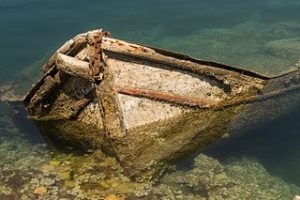
A team of Australian archeologists have discovered four 19th-century shipwrecks at Kenn Reef, more than 500 km off central Queensland coast.
The vessels were found by eight archeologists from Australian National Maritime Museum (ANMM)—the same team which had found, in 2009, the government schooner Mermaid lost in 1829 off the coast of Cairns. This time, crew was working for a joint project of ANMM and Silentworld Foundation, and found several iron anchors, copper-alloy fasteners and six cannons at depths up to 10m. Most of these vessels were trading ships coming from countries such as Indonesia and India.
According to Dr James Hunter, ANMM’s Curator of RAN Maritime Archaeology, it won’t be an easy task to identify these vessels, which went down more than 150 years ago.
“This will take months of careful examination of the archaeological discoveries against historical records, including ship’s logs and accounts of shipwrecks in newspapers from the period,” Dr Hunter said.
According to MysunshineCoast, the team departed from Bundaberg on January 10 heading for Kenn Reefs, to find eight ships known to have been wrecked in the area. One of them was Bona Vista that went down in 1828, and another was the barque Jenny Lind, which was lost in 1850.
Kenn Reefs area—a part of a submerged Kenn Plateau—is located about 500 km east of the Australian mainland. Kenn Reef is spread in an area of about 42 sq. km, and presented a considerable hazard during 19th century to ships travelling to Asia from Sydney.
The team explored water depths up to ten meters and found many iron anchors, copper-alloy fasteners, copper-alloy ship’s hardware, and cannons.
“It’s an amazing feeling to look down through the water at an anchor and know that we’re likely the first people in over 150 years to set eyes on these ships…albeit what remains of them,” said Dr Hunter.
“The hard work really begins now though as we try to identify these sites,” he added.
The team expects to get new insights about Australia’s early trade by analyzing new data together with information collected from earlier archaeological expeditions.
“This information is important as it will help shed light on the types of vessels engaged in maritime trade between Australia and the rest of the world during the mid-19th century,” said Paul Hundley, maritime archaeologist and Director of the Silentworld Foundation.
“Specific aspects, including nationality, build, and crew composition, are not readily evident in existing historical records.”

